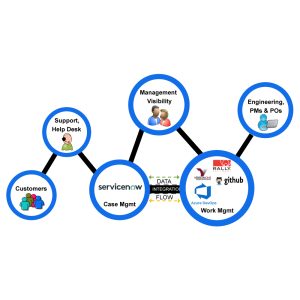The rapid development of Artificial Intelligence (AI) has captivated imaginations and sparked concerns in equal measure. While AI promises to revolutionize everything from healthcare to transportation, its ethical implications and potential risks can’t be ignored. Recognizing this, the United Nations (UN) has taken a significant step forward with a draft resolution aimed at ensuring the safe and trustworthy development of AI.
AI has the potential to transform nearly every facet of our lives. Imagine AI-powered doctors providing personalized medical diagnoses, self-driving cars navigating complex cityscapes, or intelligent machines automating tedious tasks in industries across the board. The potential benefits are vast and hold the promise of a more efficient, productive, and prosperous future.
Why is this Resolution Important?
This draft resolution marks the first attempt by the UN to establish a global framework for responsible AI development. The lack of such a framework could lead to a fragmented approach to AI governance, with different countries implementing their own regulations. This could create a complex and uncertain environment for businesses and researchers developing AI technologies. Additionally, without a global approach, there’s a risk that AI could exacerbate existing inequalities between developed and developing nations. A well-crafted UN resolution can help to ensure that AI development is conducted in a responsible and inclusive manner, benefiting all of humanity.
The resolution highlights the international community’s growing recognition of the following:
- The transformative power of AI: AI has the potential to revolutionize industries, societies, and the very nature of work. Its impact will be felt across sectors like healthcare, finance, education, and transportation. The resolution acknowledges this transformative power and emphasizes the need to harness it responsibly.
- The potential risks of AI: Alongside its benefits, AI also poses potential risks. These include algorithmic bias, discrimination, job displacement, privacy violations, and even the possibility of autonomous weapons. The resolution highlights these risks and calls for safeguards to mitigate them.
- The need for international cooperation: AI development is a global endeavor. No single country or company can control its development or deployment. The resolution recognizes this and emphasizes the importance of international cooperation to ensure the safe and ethical development of AI. This cooperation is crucial for establishing common standards, sharing best practices, and addressing global challenges with AI solutions.
- The potential to address global challenges: AI has the potential to be a powerful tool for tackling some of the world’s most pressing challenges, such as climate change, poverty, and disease. The resolution acknowledges this potential and encourages the development of AI solutions that can address these challenges in a responsible and sustainable manner.
Here’s a breakdown of the resolution’s key aspects:
- Promoting Safe and Secure AI Systems: The resolution emphasizes the importance of developing AI that is reliable, robust, and minimizes risks like bias, discrimination, and unintended consequences.
- Focus on Human-Centric AI: The resolution underscores the principle that AI should be designed and used for the benefit of humanity. It promotes AI that respects human rights, fosters inclusivity, and upholds ethical principles.
- Bridging the Digital Divide: The resolution acknowledges the potential for a digital divide in AI development and access. It encourages international cooperation to ensure equitable access to AI technologies, particularly for developing nations.
- Collaboration Among Stakeholders: The resolution calls for collaboration between governments, the private sector, civil society, academia, and technical communities. This multi-stakeholder approach is crucial for establishing robust AI governance frameworks.
- Alignment with Sustainable Development Goals (SDGs): The resolution recognizes the potential of AI to contribute to achieving the UN’s SDGs, such as those related to poverty eradication, healthcare, and climate change. It encourages the development of AI solutions that address these global challenges responsibly.
What are the Potential Implications?
The draft resolution, if adopted, has the potential to significantly shape the trajectory of AI development on a global scale. Here are some potential implications:
- Standardization and Best Practices: The resolution may pave the way for the development of international standards and best practices for ethical and responsible AI development.
- Increased Scrutiny and Regulation: We can expect to see a rise in national and international regulations for AI development and deployment, focusing on aspects like data privacy and algorithmic bias.
- Focus on Transparency and Explainability: The emphasis on trustworthy AI may lead to a greater push for transparent and explainable AI systems. This means understanding how AI systems arrive at decisions and ensuring they are not shrouded in secrecy.
- Emphasis on Human Oversight: The resolution’s focus on human-centric AI implies that human oversight will remain crucial in the development and deployment of AI systems.
- Increased International Cooperation: The call for collaboration among stakeholders could lead to greater international cooperation on AI research, development, and governance.
- Shift in Global Power Dynamics: The development and deployment of AI could lead to a shift in global power dynamics, with nations leading in AI innovation potentially wielding greater influence. The resolution can promote equitable access to AI technologies, ensuring a more balanced distribution of power among nations.
- Evolving Nature of Work: AI is expected to significantly impact the workforce, potentially automating tasks and displacing jobs. The resolution’s focus on human-centric AI can foster discussions on policies for reskilling and upskilling the workforce to adapt to the changing job market.
What Challenges Lie Ahead?
While the draft resolution is a positive step, there are challenges that need to be addressed:
- Balancing Innovation and Regulation: Striking the right balance between encouraging innovation and implementing necessary regulations will be crucial. Overly stringent regulations could stifle innovation, while insufficient regulations could lead to ethical and safety concerns.
- Enforcement Mechanisms: The resolution lacks details on how compliance with potential regulations would be enforced. Developing effective enforcement mechanisms will be essential for ensuring the effectiveness of the framework.
- Global Consensus: Achieving consensus among all member states with varying levels of AI development and priorities will be a complex task.
- Rapid Pace of AI Development: The dynamic nature of AI technology means that regulations and standards may need to adapt quickly to keep pace with advancements.
- Defining “Safe” and “Trustworthy” AI: The resolution uses terms like “safe” and “trustworthy” AI, but these terms themselves are open to interpretation. Establishing clear definitions and metrics for these concepts will be crucial for effective implementation of the resolution.
- Mitigating Potential Bias: AI systems can inherit and amplify biases present in the data they are trained on. Addressing this challenge requires developing robust methods to identify, mitigate, and eliminate bias in AI systems.
The Road Ahead for Safe and Trustworthy AI
The UN draft resolution is a significant step towards ensuring the responsible development and deployment of AI. It represents a global commitment to harnessing the power of AI for good while mitigating potential risks. As the resolution progresses through discussions and negotiations, it’s important to involve diverse stakeholders in shaping the future of AI. By fostering open dialogue and international collaboration, we can pave the way for a future where AI serves humanity in a safe, secure, and trustworthy manner.
The Impact on Nexright
Nexright, as a company at the forefront of AI development, has a vital role to play in this evolving landscape. By actively participating in discussions surrounding the UN resolution and advocating for responsible AI development practices, Nexright can help shape the future of AI.
Additionally, Nexright can ensure its own AI development adheres to the highest ethical standards, building trust and confidence in its technologies. By embracing transparency, explainability, and human-centric design principles, Nexright can become a leader in the development of safe and trustworthy AI that benefits society as a whole.




